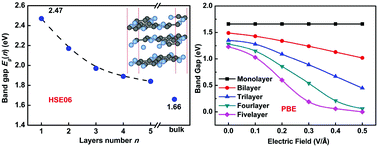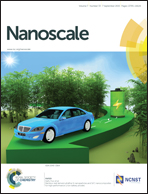Effects of stacking order, layer number and external electric field on electronic structures of few-layer C2N-h2D
Abstract
Recently, a new type of two-dimensional layered material, i.e. a nitrogenated holey two-dimensional structure C2N-h2D, has been synthesized using a simple wet-chemical reaction and used to fabricate a field-effect transistor device (Nat. Commun., 2015, 6, 6486). Here we have performed a first-principles study of the electronic properties of few-layer C2N-h2D with different stacking orders and layer numbers. Because of the interlayer coupling mainly in terms of the orbital interaction, band structure of this system, especially splitting of the bands and band gap, depends on its stacking order between the layers, and the band gap exhibits monotonically decreasing behavior as the layer number increases. All the few-layer C2N-h2D materials have characteristics of direct band gap, irrespective of the stacking order and layer number examined in our calculations. And bulk C2N-h2D has an indirect or direct band gap, depending on the stacking order. Besides, when we apply an out-of-plane electric field on few-layer C2N-h2D, its band gap will decrease as the electric field increases due to a giant Stark effect except for the monolayer case, and even a semiconductor-to-metal transition may occur for few-layer C2N-h2D with more layers under an appropriate electric field. Owing to their tunable band gaps in a wide range, the layered C2N-h2D materials will have tremendous opportunities to be applied in nanoscale electronic and optoelectronic devices.


 Please wait while we load your content...
Please wait while we load your content...